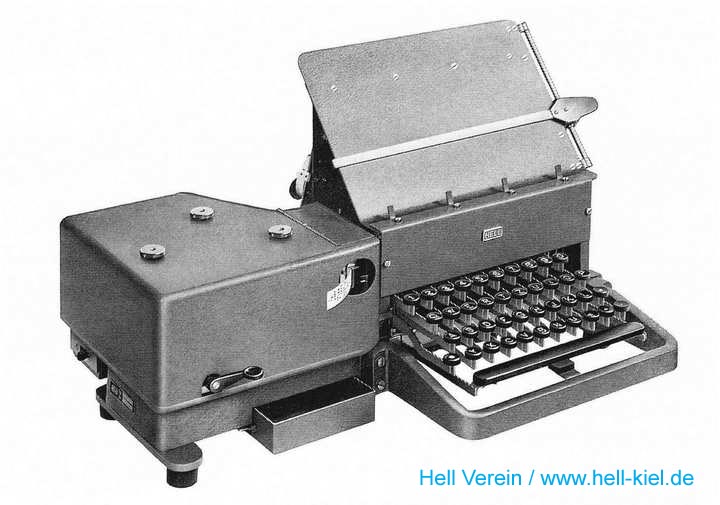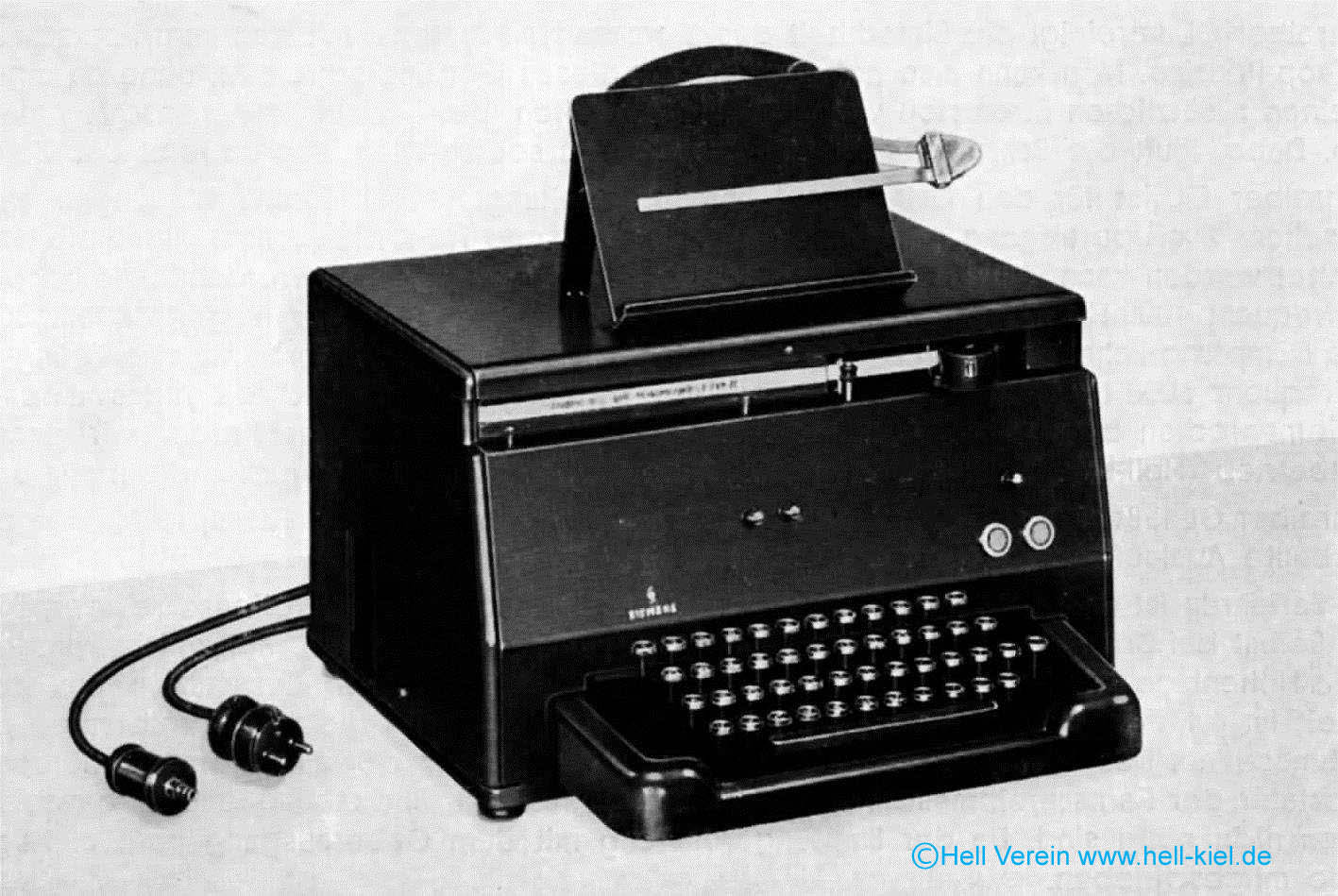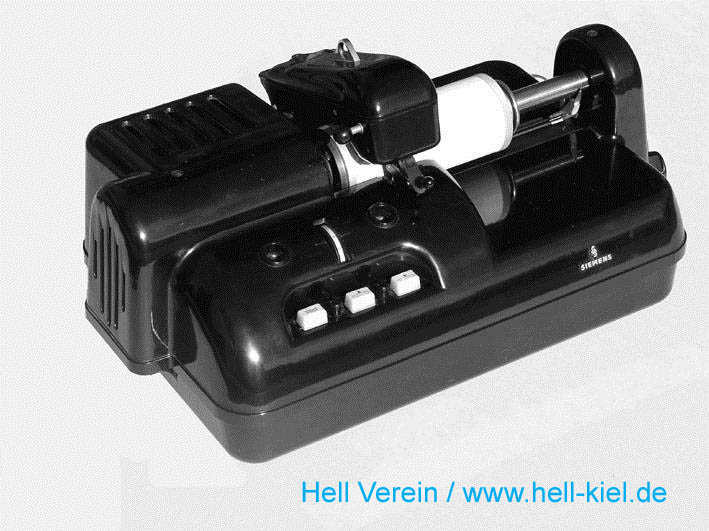Communication technology
|
An overview of the communication technology devices developed by Hell
Brochure 1958 ; 4 pages ; 920 Kbytes ; German
Brochure 1961 ; 4 Seiten ; 920 Kbyte ; German
Brochure 1973 ; 6 pages ; 2,4 MByte ; German
Nachrichtentechnik Lieferübersicht Range of products
Brochure 1978 ; 9 pages ; 2,6 Mbyte ; German/ English
Information technology at Hell
"für uns alle" No. 35 ; page 2 bis 4 ; 3,1 MByte ; German
|
|||
|
Morse
devices
|
The Morse technique goes back to the inventor Samuel F. B. Morse, who presented his telegraph first on September 4, 1837. For a long time the transfer speed for Morse communication was dependent on the performance of the operator to key in the Morse codes. The company Hell produced in its early stage Morse transmitters, which read in punched paper tape prepared by a key punch. This increased the transmission speed considerably. | ||
|
Teletype devices
|
The Hellschreiber is a further development of the teletype writer.
The characters of a text to be transmitted were sent image-wise
as an arrangement of picture elements (pixels). With this method
a disturbance on the transmission channel can only impair the read- ablity of a character, however, it can not cause the recording of a wrong character.
|
||
|
Fax devices
|
Compared to the Hellschreiber, Facsimile devices don't just transmit individual characters, but entire documents consisting of black and white pixels, e.g. business letters or drawings. Already in 1956 Hell developed the first facsimile device. Especially facsimile devices for the transmission of weather maps, which were developed at the same time, were spreading quickly at weather services and on ships. A specialty were the Pressfax devices, which were used to transmit ready-made printing originals, e.g. for newspaper pages, from the editing office to different printing sites. This technique was used mainly in large-area countries (US, Russia), if the newspaper should be printed simultaneously at several printing sites, which often had a distance of thousands of kilometers. |
||
|
|
Wire photo devices
|
|
With wire photo devices pictures having continuously varying grey tone or color value pixels could be sent and received. In particular, press offices and police authorities used these devices. Later, also portable wire photo transmitters were developed, which were used
by journalists to transmit actual pictures quickly from anywhere on
the earth to their editing office.
|




